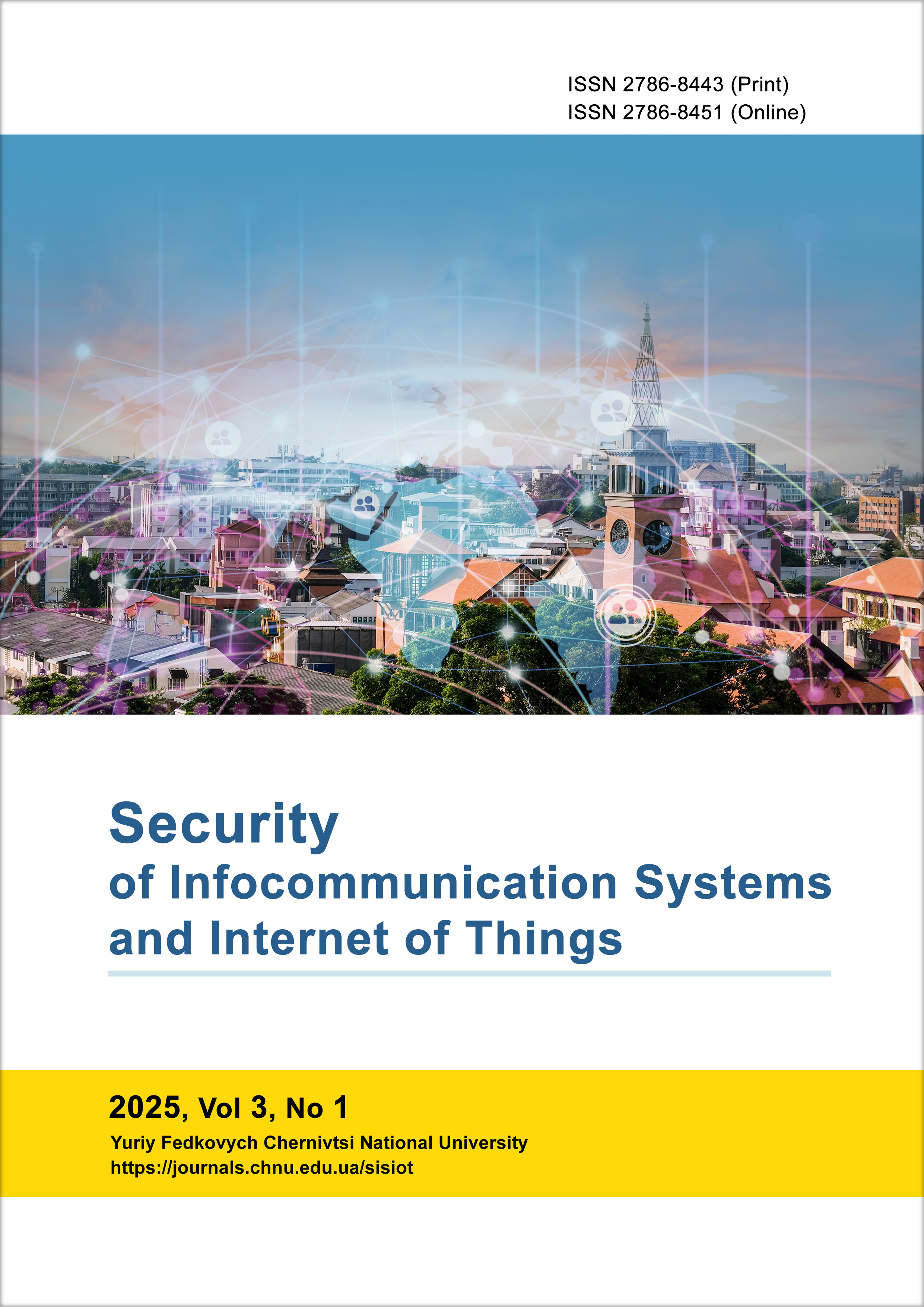Perspectives on the Development and Use of Nuclear Methods for Detecting Landmines and Minefields: A Review
DOI:
https://doi.org/10.31861/sisiot2025.1.01010Keywords:
nuclear quadrupole resonance, neutron-based detector, landmines, mine-fields detection, artificial intelligenceAbstract
Landmines remain a deadly legacy of past and present conflicts, with these hidden explosive devices causing thousands of casualties each year. In addition to the existing mainstream methods of detecting landmines and minefields, several new technologies are being investigated, such as nuclear mine detection methods, namely nuclear quadrupole resonance (NQR) and neutron detection. Both NQR and neutron techniques are quite promising and offer powerful advantages in detecting landmines and minefields, although they have certain draw-backs in practical use. Artificial intelligence can significantly mitigate these shortcomings through advanced signal processing, adaptive algorithms, etc. The purpose of the article is to analyze, research and systematize available information on the positive effectiveness and feasibility of using nuclear methods (NQR and neutron-based) to detect mines and minefields, as well as to improve the accuracy and effectiveness of using these methods using artificial intelligence.
Downloads
References
J. Ishikawa and K. Furuta, Anti-personnel Landmine Detection for Humanitarian Demining. London: Springer, 2009, pp. 43–45, 132–148, doi: 10.1007/978-1-84882-346-4.
M. Croll, The History of Landmines. London: Leo Cooper – University of Michigan, 1998, pp. 4–5.
ScienceDaily, “Research uses lasers to detect landmines, underground objects,” University of Mississippi, 2024, pp. 2–5.
A. Peyton and D. Daniels, “Detecting landmines for a safer world,” Ingenia, no. 75, 2018. [Online]. Available: https://ingenia.org.uk/articles/detecting-landmines-for-a-safer-world
F. Lombardi, H. D. Griffiths, and M. Lualdi, “Characterization of the internal structure of landmines using ground-penetrating radar,” IEEE Geosci. Remote Sens. Lett., vol. 18, pp. 266–270, 2020.
H. Kasban, O. Zahran, et al., “A comparative study of landmine detection techniques,” Springer Science Business Media, LLC, 2010, pp. 102–109.
L. Capineri, T. Bechtel, and G. Pochanin, “Holographic and impulse subsurface radar for landmine and IED detection,” in Physics and Biophysics. Dordrecht: Springer, 2019, pp. 33–52.
A. Kasianchuk and H. Lastivka, “Promising areas of integration of artificial intelligence technologies in unmanned aerial vehicles,” in Proc. SPIE, 2024, doi: 10.1117/12.3008983.
S. Anitei and K. Kezic, “Bees to detect landmines based on their keen,” Oak Ridge National Laboratory, 2007, pp. 2–5.
H. R. Pourghasemi and O. Rahmati, “Prediction of the landslide susceptibility: Which algorithm, which precision?,” Catena, vol. 162, pp. 177–192, 2018, doi: 10.1016/j.catena.2017.11.011.
M. McNabb, “Processes drone images to identify landmines: Saving lives in Ukraine,” 2024. [Online]. Available: https://dronelife.com/2024/10/28/spotlightai-processes-drone-images-to-identify-landmines
J. D. Kelleher, et al., Fundamentals of Machine Learning for Predictive Data Analytics, 2nd ed. Cambridge, MA: MIT Press, 2020, pp. 153–156.
A. Saliba, K. Tout, et al., “Bridging human expertise with machine learning and GIS for mine type prediction and classification,” ISPRS Int. J. Geo-Inf., 2024, doi: 10.3390/ijgi13070259.
S. Lameri, F. Lombardi, P. Bestagini, et al., “Landmine detection from GPR data using convolutional neural networks,” in Proc. IEEE, 2017, pp. 3–5.
K. Gholamnia, T. G. Nachappa, et al., “Comparisons of diverse machine learning approaches for wildfire susceptibility mapping,” Univ. of Salzburg, Salzburg, Austria, 2020.
Published
Issue
Section
License
Copyright (c) 2025 Security of Infocommunication Systems and Internet of Things

This work is licensed under a Creative Commons Attribution 4.0 International License.









